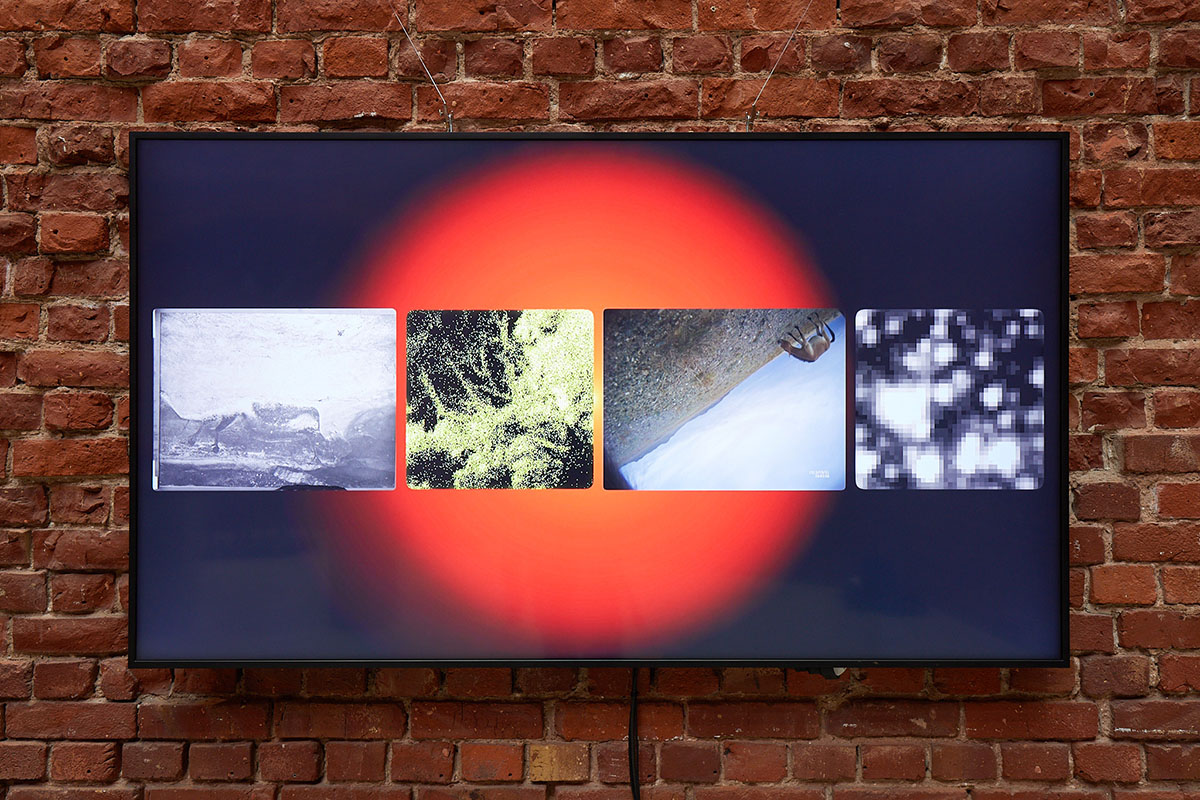
Video, 20min, 2024 (exerpt 2min)
AD INFINITUM shows scientific images like a collection of evidence, brings them out from the hidden realm and opens up new connections by combining the material. The focus is on film as a time-based medium with the potential to represent processualities and as a means of expanded perceptions.
Recordings from a camera collar taken at regular intervals over a longer period of time provide insight into intimate scenes from the life of a wild horse in the Gobi, comparable to a visual diary. Soon after the “discovery” of this species, which was considered a scientific sensation, the animals were in acute danger of extinction in the middle of the last century. With just a few specimens, after various successes and setbacks, it was possible to restabilize the population in human care. Since the 1990s, there have been research-supported release programs to reintroduce horses to the steppe as their original habitat. Thousands of years before these ancient wild horses were a source of inspiration for Paleolithic rock paintings and are immortalized in countless cave works of art. The prominent Lascaux Cave in France was discovered by accident in 1940. The following month, the first photographic documentation was made in black and white by Fernand Windels. Referred to as the “Sistine Chapel” of cave art, the time capsule was a magnet for countless visitors, but the air they breathed soon caused damage to the paintings, which were around 17,000 years old. Due to the destabilized climatic balance, algae, fungi and bacteria spread on the frescoes and put them in danger. Since the 1960s, only restorers and scientists have been able to enter the original cave under strict conditions. The electron microscopic and X-ray spectroscopic images in the video installation come from the context of an investigation into the microbial ecology of the cave. Views of alien-looking micro-landscapes form a bridge from the Stone Age to modern imaging techniques. Changes take place continuously at various levels and can be measured in detail through recording and documentation. In May of this year, astrophysicists published their discovery of how a dying and expanding star (ZTF SLRN-2020) swallowed a planet. The process itself was not new and had been theorized before. However, such an event was confirmed for the first time through observation “in the act” using various telescopes in the optical and infrared range. Light fluctuations at the pixel level allowed this interpretation as a result. This process was calculated using computer simulations and analyzed as an example. According to current research, this will be the fate of the Earth five billion years from now, when it will be devoured by the doomed sun in a final flash of light. Everything that begins seems to have to end at some point – although cosmic time scales are elusive.
A slowed down version of Donna Summer’s ecstatic 70’s disco hit I Feel Love accompanies the video installation like a technoid lament. The repetitive, loop-like beat and the exclusive use of synthesizers made the piece a pioneer for danceable techno rhythms. It was the last song on the record I Remember Yesterday, on which each track represented a different decade and this one pointed to the future.
The rapid development of technologies on different levels that make the unobservable observable leads us to expect numerous expansions of our worldview that will reconstitute our perception of reality and reflect ideas of transience and eternity in a wider spectrum.
Horse Footage: International Takhi Group/Great Gobi B SPA and Dr. Petra Kaczensky (Forestry and Wildlife Management), Inland Norway University of Applied Sciences (INN) Lascaux Footage: Dr. Pedro M. Martin-Sanchez (Environmental Microbiology and Cultural Heritage) and Dr. Ana Z. Miller (Geomicrobiology and Biogeochemistry), Institute of Natural Resources and Agrobiology of Seville (IRNAS); Fernand Windels / Ministère de la Culture (France), Heritage and photography media library (MPP) Space Footage: Dr. Morgan McLeod and Dr. Kishalay De (Astrophysicists), Harvard-Smithonian Center for Astrophysics (CfA) Star-Planet Simulation: Dr. Mike Lau (Astrophysicist), Heidelberg Institute for Theoretical Studies (HITS)